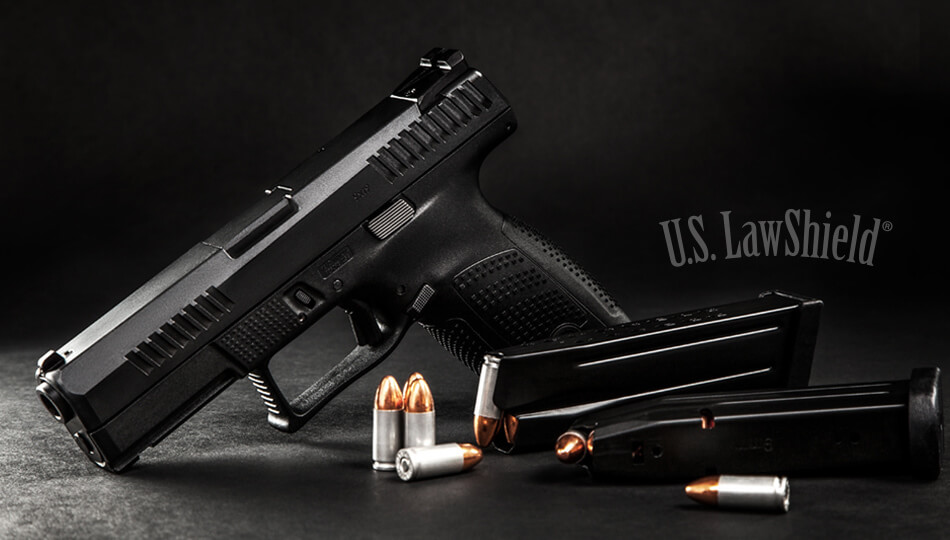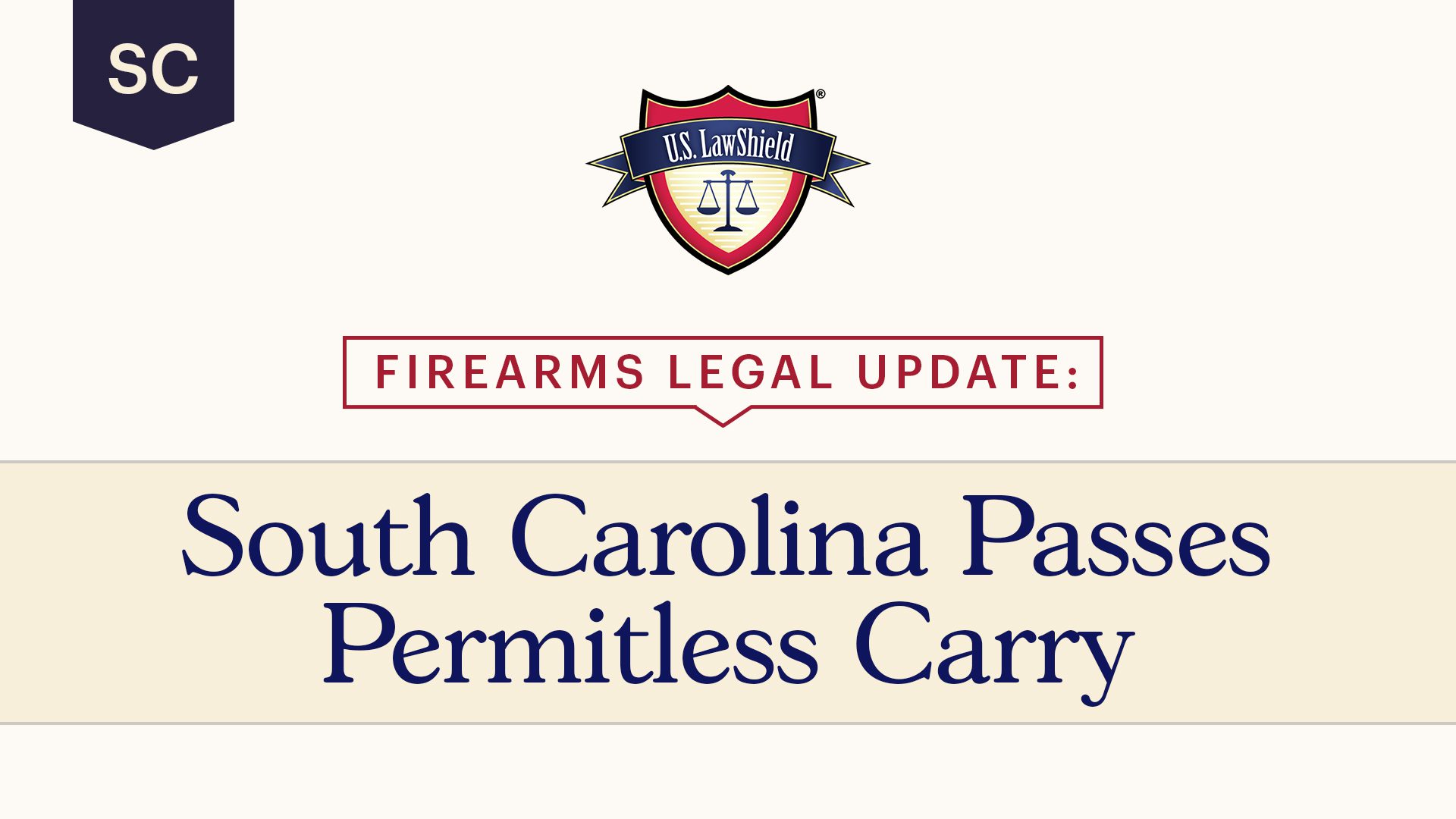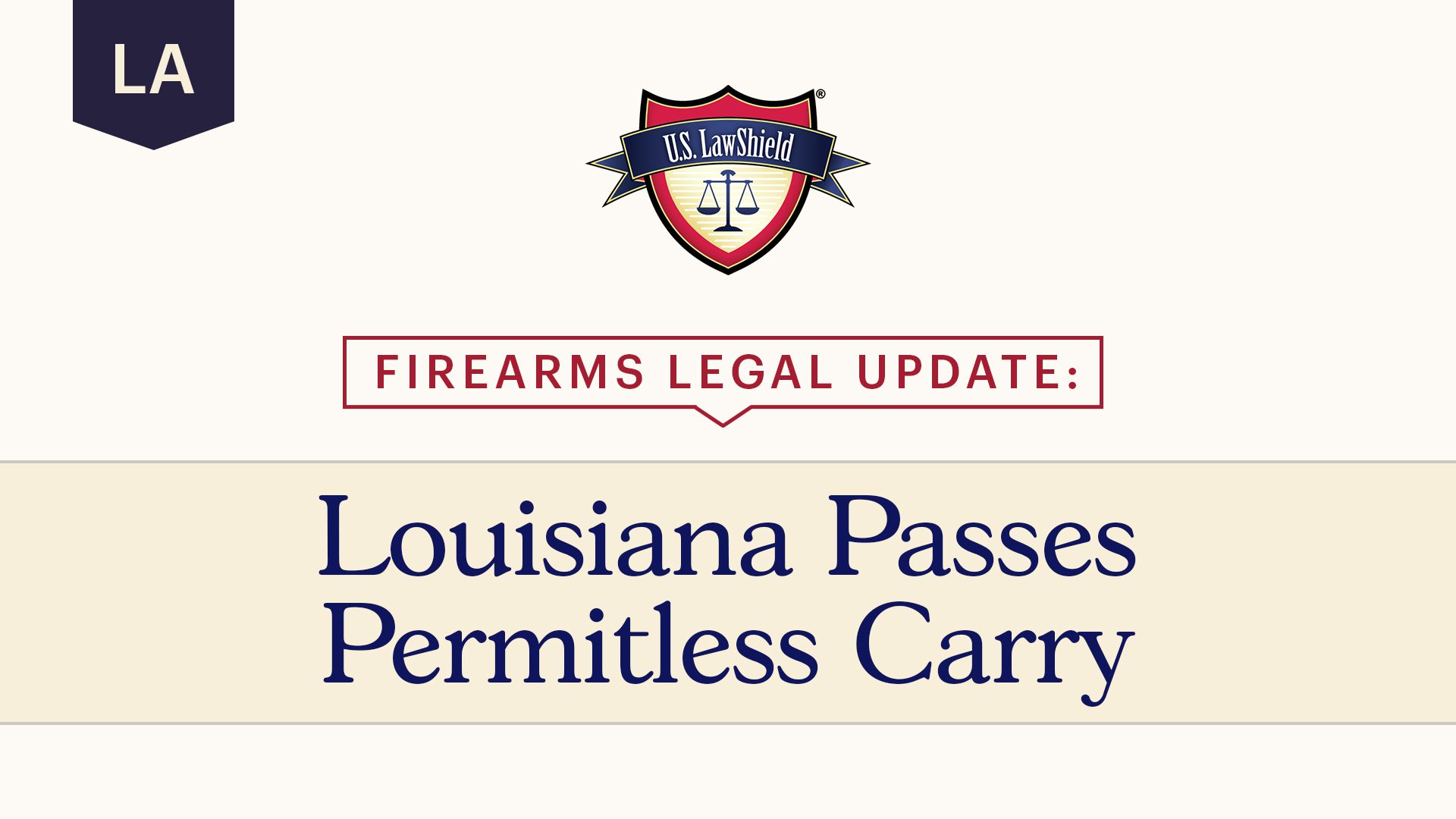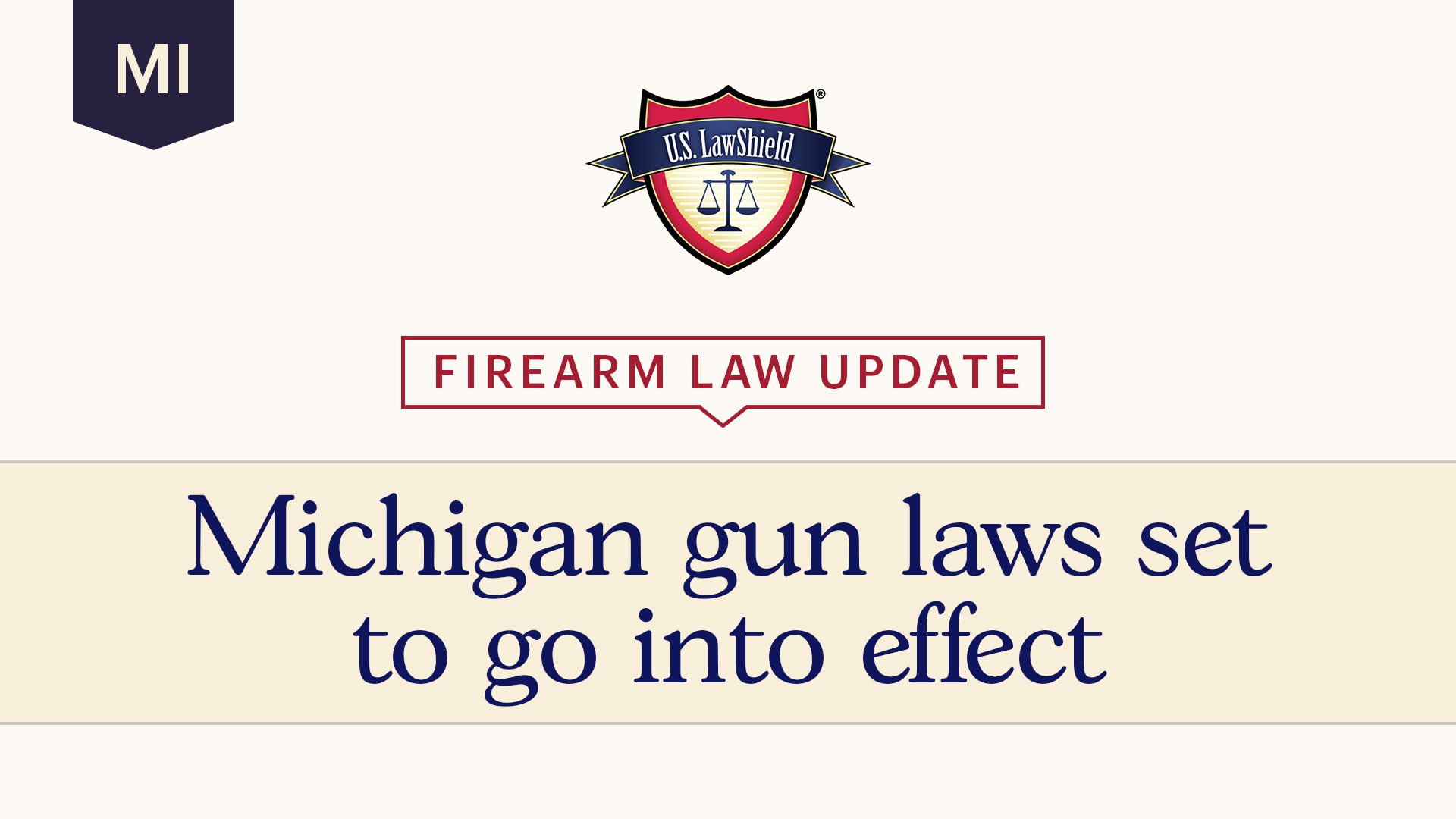
The Second Amendment protects and reinforces your right to bear arms. But what exactly is that right? How is it defined by the law? As the ultimate interpreter of American law, the Supreme Court of the United States (SCOTUS) tells us what the Second Amendment does—and doesn’t—protect.
Here’s a simplified breakdown of Second Amendment Supreme Court cases and their impact on our self-defense rights.
New York State Rifle & Pistol Association, Inc. v. Bruen (Pending)
The Problem
Robert Nash and Brandon Koch were denied a New York concealed carry license because they failed to show “proper cause.” New York’s licensing requirements define proper cause as a special need to defend yourself beyond the general desire to always be prepared. The two men, joined by the New York State Rifle & Pistol Association (a gun rights group), argued that denying the right to carry handguns outside the home for self-defense goes against the very purpose of the Second Amendment.
The Ruling
The Supreme Court heard arguments for this case in late 2021 and has not yet announced a decision. Whatever they decide, it’ll be the first time they’ve directly addressed a major issue regarding an individual’s right to bear arms since McDonald v. City of Chicago in 2010. And it could fundamentally alter how our self-defense rights may be regulated in the future.
As soon as this Second Amendment Supreme Court case is decided, we’ll give you a full breakdown on what it means for your rights.
United States v. Cruikshank, 92 U.S. 542 (1875)
The Problem
A group of individuals partially responsible for the 1873 Colfax Massacre in Louisiana were convicted under the Enforcement Act of 1870 for depriving other citizens of their First and Second Amendment rights.
The Ruling
In this Supreme Court case, every conviction was overturned. The Court noted that the Second Amendment protected individual rights only from the federal government. And the Fourteenth Amendment protected certain rights from state governments, not other people. Because individuals had infringed upon the rights of others, neither protection applied. It was the responsibility of the state government to protect its citizens from other citizens.
This ruling acknowledged that the Constitution doesn’t give us the right to bear arms, it simply protects it from Congress. This left states free to ignore the protections of the Bill of Rights and potentially restrict the rights of entire populations. Although it took 135 years, this was eventually overturned in McDonald v. City of Chicago.
Presser v. Illinois, 116 U.S. 252 (1886)
The Problem
Herman Presser led a group of roughly 400 men brandishing guns and other weapons (including a sword) in a military-style parade through the streets of Chicago. Presser and the men were part of a social club that supposedly trained people for the duties “expected” of them as citizens, including military practices. However, it was illegal (and still is) in Illinois not only to form private military organizations, but also to do any kind of military drills in the city without permission from the governor. Presser argued this infringed upon his Second Amendment rights because it prevented the people from being prepared to “answer the call of the nation” and protect liberty.
The Ruling
The Supreme Court held yet again that the Second Amendment applied only to the federal government, not state governments. (This ruling was also overturned in McDonald v. City of Chicago.) But there was a small win in this Second Amendment Supreme Court case. SCOTUS noted that there IS a limit to how far states can restrict gun ownership; states can’t ban the people from owning weapons, “so as to deprive the United States of their rightful resource for maintaining the public security…”
United States v. Miller, 307 U.S. 174 (1939)
The Problem
Jack Miller and Frank Layton were prosecuted for transporting a 12-gauge shotgun with a barrel length of less than 18 inches from Oklahoma to Arkansas without the registration or tax stamp required under the National Firearms Act (NFA). The two men argued that the NFA and restricting or taxing specific types of firearms violated the Second Amendment.
The Ruling
The Supreme Court held that the NFA, which places registration requirements on machine guns, short-barreled weapons, destructive devices, and other unique firearms, does not violate the Second Amendment. SCOTUS reasoned that the weapons regulated by the NFA aren’t reasonably related to maintaining a “well regulated Militia,” so aren’t protected by the Second Amendment.
Some things to note in this Second Amendment Supreme Court case are that Miller’s court-appointed attorney never showed up because he was never paid and, unfortunately, Miller was shot to death before a decision was given. So, no one was able to argue why they believed the law was unconstitutional. This means SCOTUS heard only the government’s side of things.
Barrett v. United States, 423 U.S. 212 (1976)
The Problem
Pearl Barrett, a previously convicted felon, was charged with violating the Gun Control Act of 1968 (GCA) after purchasing a gun that was involved in interstate commerce before reaching the retailer’s shelf. Barrett believed this charge didn’t apply to him because he had nothing to do with the gun before it showed up at his local federally licensed dealer.
The Ruling
The main takeaway of this Second Amendment Supreme Court case is that the Court again upheld gun control laws. SCOTUS said the section of the GCA barring felons from receiving any gun through interstate commerce applied to any firearm that had ever moved in interstate commerce, regardless of if that was before the felon purchased it; the GCA was meant to “keep firearms away from the persons Congress classified as potentially irresponsible and dangerous.” But applying Barrett’s logic would essentially create a loophole, preventing felons only from purchasing guns directly from retailers located in other states. At the end of the day, Barrett was a convicted felon, and his purchase of a firearm was illegal.
Enjoying this content? Find out how you can get more sent straight to your inbox.
United States v. Lopez, 514 U.S. 549 (1995)
The Problem
Alfonso Lopez, Jr. was convicted of violating the Gun-Free School Zones Act of 1990 after bringing a revolver (unloaded) and cartridges to his Texas high school. Lopez argued that regulating or banning guns in local schools was well outside the power of Congress under the Commerce Clause and was unconstitutional. But the federal government argued that bringing a gun to school would cause more gun violence and crime, which would lead to economic problems.
The Ruling
This case was actually a major Commerce Clause case, but it’s in this list of Second Amendment Supreme Court cases because when SCOTUS ruled the Gun-Free School Zones Act of 1990 unconstitutional, they further limited how the federal government could regulate (or restrict) gun rights.
District of Columbia v. Heller, 554 U.S. 570 (2008)
The Problem
Special Policeman Dick Heller and several other residents of the District of Columbia all wanted a gun for self-defense. At the time, D.C. prohibited the carrying of any unregistered firearms yet barred all handgun registration. D.C. also required all lawfully owned guns to be kept unloaded and disassembled or bound by a trigger lock, including in a person’s own home, with few exceptions. Heller felt this ban prevented someone from properly defending themselves at home and violated the Second Amendment.
The Ruling
In this Second Amendment Supreme Court case, the Court made several rulings upholding our constitutional right to keep and bear arms. It found that:
- The Second Amendment protects an individual right to own firearms for the purpose of self-defense, unrelated to militia or military activity. And because handguns are today’s primary defensive weapon of choice, they’re also protected.
- The phrase “bear arms” meant: “to wear, bear, or carry . . . upon the person or in clothing or in a pocket, for the purpose . . . of being armed and ready for offensive or defensive action in a case of conflict with another person.”
- A “well regulated Militia” is not the state’s military forces.
- The D.C. regulation effectively banning handgun possession and the law requiring firearms in the home to be kept inoperable at all times, both violated Second Amendment protections.
- The Second Amendment is not unlimited or absolute. Reasonable restrictions may be upheld (such as limits on firearm possession, carrying in schools and government buildings, and “dangerous and unusual” weapons).
Unfortunately, the District of Columbia is under the exclusive jurisdiction of Congress and the federal government, not a state. So, while SCOTUS made several key decisions on what the Second Amendment means and protects, the case shed no light on whether states could regulate and/or ban firearms.
McDonald v. City of Chicago, 561 U.S. 742 (2010)
The Problem
Otis McDonald, a 76-year-old man from Chicago, wanted a handgun for self-defense but was not able to get one under local law. A city ordinance required all handguns to be registered, yet Chicago refused all handgun registrations after a 1982 citywide ban. McDonald argued that the Second Amendment applied to the states as well as the federal government and that this ban was unconstitutional based on the rulings in Heller. The City of Chicago argued that states should be able to regulate firearms based on local conditions.
The Ruling
The Supreme Court held that Second Amendment protections apply at the state level through “selective incorporation” under the Fourteenth Amendment. SCOTUS repeated that individual self-defense was at the core of the Second Amendment. Meaning, the constitutional right to bear arms (and its protections as stated in Heller) prohibits states from enacting bans on handguns for self-defense in the home. This Second Amendment Supreme Court case decision overturned the Second Amendment rulings in Cruikshank and Presser.
Caetano v. Massachusetts, 136 S. Ct. 1027 (2016)
The Problem
Jaime Caetano was charged with owning an illegal weapon after displaying a stun gun during a dangerous encounter with her abusive ex-boyfriend in Massachusetts. The Massachusetts Supreme Judicial Court (SJC) upheld the state prohibition on stun gun possession, stating stun guns weren’t protected by the Second Amendment because they were:
- “Not in common use at the time” of the amendment’s enactment;
- Dangerous and unusual as a “modern invention”; and
- Couldn’t be easily adapted for military use.
The Ruling
This Second Amendment Supreme Court case is often left off most lists because it didn’t impact any gray areas. When SCOTUS took the case, the facts were so clear they were able to issue a per curiam decision (issued by the court rather than a specific justice) without even having to hear oral arguments. To put it in perspective, from 1946 to 2012, SCOTUS issued a per curiam decision in only 7% of cases.
The Court made it clear the SJC’s reasoning for upholding the Massachusetts law violated the Second Amendment, based on both the decisions in Heller and McDonald. They repeated that the Second Amendment protects weapons for self-defense purposes and not just for military reasons, and it applies to weapons “that were not in existence at the time of the founding.” SCOTUS also clarified that simply being a “modern invention” did not make it dangerous and unusual.
Justice Samuel Alito, joined by Justice Clarence Thomas in a concurring opinion, also scolded Massachusetts for failing to protect its citizens from others who are dangerous, reminding us that the Second Amendment protects our right to defend our lives when the states “are unable or unwilling” to do so:
“If the fundamental right of self-defense does not protect Caetano, then the safety of all Americans is left to the mercy of state authorities who may be more concerned about disarming the people than about keeping them safe.”
Second Amendment Supreme Court Case Silence
In the years since McDonald, there were over 75 federal court opinions upholding state restrictions on the Second Amendment that the U.S. Supreme Court refused to review.
For example, in April 2021, the Supreme Court refused to hear challenges to a lifetime ban on firearm possession for those convicted of a non-violent misdemeanor. And before that, in June 2017, the Court declined to review a case involving San Diego County’s strict concealed carry permit requirements. But not all the justices agreed with this silence. Justice Thomas, joined by Justice Neil Gorsuch, commented:
For those of us who work in marbled halls, guarded constantly by a vigilant and dedicated police force, the guarantees of the Second Amendment might seem antiquated and superfluous. But the Framers made a clear choice: They reserved to all Americans the right to bear arms for self-defense. I do not think we should stand by idly while a State denies its citizens that right, particularly when their very lives may depend on it.
Second Amendment Supreme Court Cases FAQ’s
Your Protection Starts Here!
The information provided in this publication is intended to provide general information to individuals and is not legal advice. The information included in this publication may not be quoted or referred to in any other publication without the prior written consent of U.S. LawShield, to be given or withheld at our discretion. The information is not a substitute for, and does not replace the advice or representation of a licensed attorney. We strive to ensure the information included in this publication is accurate and current, however, no claim is made to the accuracy of the information and we are not responsible for any consequences that may result from the use of information in this publication. The use of this publication does not create an attorney-client relationship between U.S. LawShield, any independent program attorney, and any individual.





These cases should be converted to or added to the existing case overview in a laymen’s language to understand the rulings properly. Simply copying the lawyers’ terms does not help the average person’s comprehension of what each case means
This presentation of the court cases associated with our 2nd Amendment is clear concise and extremely informative. I am glad to be a member of USLAWSHEILD, thank you for this information.
Please KEEP US INFORMED, our very lives may depend on it!
It is pretty obvious to me that the original 2nd amendment simply stated protected each individual the right to own a fire arm if they so desired. If a state forms a militia, those owners can bring their own weapons and the state has the responsibility to regulate when and how those firearms can be used.
The right to brandish those firearms any time, any place was not guaranteed and it is plain that congress put the responsibility on the state to protect it’s citizens from those who would use weapons for public harm. It my eyes, the state bears the responsibility and should bear the blame for allowing uncontrolled use of fire arms and should be held legally accountable when they do not do so.
Actually the second Militia Act o 1792 requires every householder to own a fire arm and have twenty round ready. We all are Militia.
Brandishing of arms is 90% of defusing a situation so that no shots are fired.
So far reading through these SCOTUS “brief” briefs, I feel that the fear of total gun control is used as a distraction, the” pity card.”
A distraction that has muddied the water so that the truly effective and reasonable changes can be employed.
My reading of the 1939 Scotus case was differnent: In 1939, in US v Miller, the SCOTUS ruled that for firearms to be protected under the 2d Amendment, they had to be useful by a militia, ie, that they had to be a weapon of war. Machine guns and ordinence are very much used in wars.
TENNESSEE CASE
The Tenn cases of Aymette v. State and Andrews v. State have similar reasoning; derringers, cane swords, “Arkansas Toothpicks” and other weapons of assassins are not protected. On the other hand weapons of war are protected.
The FRAMERS feared a future corrupted government which is why they did not delegate the privilege of creating a Militia to the Congress or the States for no corrupt government would ever allow a Militia of armed Citizens, said Citizens out for the heads of the government, to ever be formed.
=
This is so obvious even Stevie Wonder can see this fact.
=